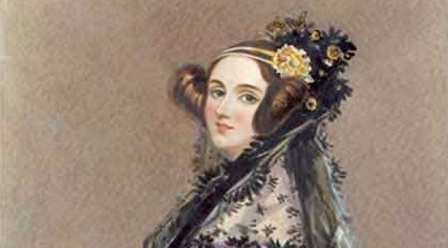
Ada Lovelace Day was first celebrated in 2009 to celebrate the achievements of women in science, technology, engineering and maths (STEM). Today, October 14th is known internationally as ‘Ada Lovelace Day’, so who may you ask is Ada Lovelace and what relevance does she have to BLOODHOUND SSC?
Who is Ada Lovelace
Ada Lovelace was born on 10th December 1815 as Ada Gordon. Her parents were George Gordon, Lord Byron, and his wife Annabella Milbanke. Ada’s mother was fearful that Ada would inherit her father’s ‘poetic’ temperament, so she was raised under a strict regimen of science, logic, and mathematics.
As a child, Ada had a fascination with machines– designing boats and steam flying machines, and was known to devour the diagrams of the new inventions of the Industrial Revolution that filled the scientific magazines of the time.
Ada married at the age of 19 to an aristocrat, William King; when King was made Earl of Lovelace in 1838 his wife became Lady Ada King, Countess of Lovelace and thus she is generally called Ada Lovelace.
In 1833, Ada’s mentor, Mary Sommerville, introduced her to Charles Babbage, the Lucasian Professor of Mathematics who had already attained considerable celebrity for his visionary and perpetually unfinished plans for gigantic clockwork calculating machines. Charles Babbage and Ada Lovelace became close and lifelong friends.
The Analytical Engine
Lovelace was deeply intrigued by Babbage’s plans for a complicated device he called the Analytical Engine, which was to combine the array of adding gears of his earlier Difference Engine with an elaborate punchcard operating system. It was never built at the time, but the design had all the essential elements of a modern computer. Today, a Difference Engine based on Babbage’s original designs is on display at the Science Museum.
In 1842 Lovelace translated a short article describing the Analytical Engine by the italian mathematician Luigi Menabrea, for publication in England. Babbage asked her to expand the article, “as she understood the machine so well”. The final article is over three times the length of the original and contains several early ‘computer programs,’ as well as striking observations on the potential uses of the machine, including the manipulation of symbols and creation of music. Although Babbage and his assistants had sketched out programs for his engine before, Lovelace’s are the most elaborate and complete, and the first to be published; so she is often referred to as “the first computer programmer”. Babbage himself “spoke highly of her mathematical powers, and of her peculiar capability — higher he said than of any one he knew, to prepare the descriptions connected with his calculating machine.”
Ada Lovelace died of cancer at the age of 36 on 27th November 1852, a few short years after the publication of “Sketch of the Analytical Engine, with Notes from the Translator”.
The Analytical Engine remained a vision, until Lovelace’s notes became one of the critical documents to inspire Alan Turing’s work on the first modern computers in the 1940s.
Links to BLOODHOUND SSC
The study and application of maths underpins engineering, and today the use of mathematical models has enabled the design team initially through Ron Ayers and Ben Evans, and subsequently under the leadership of Mark Chapman at The BTC to design and build a car that is attempting to take the World Landspeed Record to 1000mph.
Sources of Information:
http://www.famousscientists.org/ada-lovelace/
Who Was Ada Lovelace: The Computer Wizard of Victorian England? By Lucy Lethbridge
In recognition of Ada Lovelace Day, BLOODHOUND Intern Christina Ravinet began the BLOODHOUND SSC Education Roadshow event at Ormiston Venture Academy with an introduction to Ada Lovelace. You can catch the all the events celebrating the day through Twitter and the #AdaLovelaceDay

